A nation must think before it acts.
Bottom Line
Narrative Intelligence (NARINT), the study and analysis of misinformation and propaganda in open-source media, can show how narratives affect public opinion, trace foreign-sponsored propaganda narratives to their original source, and foreshadow adversarial operations that those narratives are designed to support.
With its other lines of deterrence eroded, preserving the domestic influence of its “Axis of Resistance” (AOR) proxies in Iraq has become a top priority for Tehran. The NARINT presented in this article demonstrates how narratives pushed by these groups can act as important indicators of how Iran intends to salvage its regional influence.
The NARINT presented in this article suggests that this influence campaign aims to legitimize the AOR’s role in Iraqi governance and security while discrediting alternative power centers, ensuring that Tehran maintains its influence in Baghdad amid AOR setbacks elsewhere in the region. Narratives promoted by Iraqi AOR factions since the start of 2025 are designed to stoke nationalist outrage and inflame sectarian tensions to ensure that the Iraqi government maintains its pro-Iranian orientation in the lead-up to Iraq’s November elections. These narratives target both foreign and domestic actors that threaten Iran’s interests by accusing these actors of undermining Iraq’s sovereignty or security, a sentiment tailored to resonate with Iraqi audiences after decades of conflict and foreign interference.
NARINT also indicates that Iraqi AOR factions are intentionally amplifying contradictory narratives in Western and Arab media to mislead observers as they make strategic adjustments ahead of elections. These factions also alternate between escalatory and deescalatory narratives to mask intent. Rather than reflecting clear strategic objectives, these narratives are designed to obscure them, creating a gap between what is said and what is done.
Executive Summary
Historically, Tehran has enjoyed outsized influence over Iraqi policy through the entrenchment of its Axis of Resistance (AOR) proxies in Iraq’s governing institutions and security apparatus. However, simmering domestic tensions and broader regional setbacks have converged at a critical moment, threatening Tehran’s grip on Baghdad ahead of Iraq’s upcoming November elections. This analysis examines media narratives amplified by Iraqi AOR factions as they seek to preserve their domestic leverage amid a shifting regional balance of power. Findings suggest that these narratives are designed to frame actors that threaten Tehran’s regional interests as immediate threats to Iraqi sovereignty. This campaign is being deployed with the singular objective of preserving AOR influence in Iraq as one of Tehran’s last remaining lines of deterrence after suffering unprecedented sanctions, proxy losses, and damage to its nuclear infrastructure.
Narratives often signal strategic intent before action is taken. Several predictions are thus drawn from this analysis. First, Iraqi AOR factions will likely prioritize preserving domestic influence over meaningful military escalation. To this end, AOR media will continue to amplify narratives designed to delegitimize AOR political opponents ahead of Iraq’s upcoming November elections. These narratives will likely continue to focus on perceived threats to Iraqi sovereignty, including Turkey, Syria, the US, and Iraq’s semi-autonomous Kurdistan Regional Government (KRG). Iraqi AOR factions may also continue to stage low-intensity violence to justify continued AOR dominance over Iraq’s Popular Mobilization Forces (PMF). Such incidents would serve to pressure AOR political opponents to pass a bill that would further institutionalize AOR power by formally incorporating the PMF into Iraq’s national security forces. Finally, the Iraqi AOR will likely continue amplifying contradictory narratives to confuse or mislead its adversaries as it recalibrates its strategy in the face of external pressures.
Background: The Axis of Resistance in Iraq
Axis of Resistance is a term used to describe a loose network of Iran-backed Shia militias that regularly execute attacks against US and Israeli targets throughout the Middle East. Long the cornerstone of Tehran’s security policy, these militias play a critical role in projecting Iranian military strength and are a primary focus of US efforts to counter Tehran’s regional influence.
The AOR’s role beyond the battlefield has received comparatively little attention. Tehran’s most indispensable proxies act as multifaceted instruments of Iranian statecraft, boasting political, clerical, and media wings. These assets have long enabled AOR factions like Hezbollah and the Houthis to advance Tehran’s objectives while consolidating power and influence domestically. These complex dynamics have prompted many to reach for vivid metaphors to capture the AOR’s true character. In 2018, former Israeli Defense Minister Naftali Bennett likened the AOR to an octopus, stating that “The Iranians don’t love dying, but it is very easy for them to send others to die. While we’re shedding blood fighting their tentacles, the octopus’s head is lounging in its chair enjoying itself.”
This analogy is more apt than perhaps even Bennet realized. Octopus arms have segmented nervous systems, meaning that each tentacle can control both its own movements and even those of other arms without having to consult the brain directly. Similarly, many AOR factions reserve the right to conduct their own political maneuvers, criminal operations, and even attacks without consulting Tehran. This means that in order to preserve their value as proxies, these factions must balance domestic interests with Iran’s regional objectives, which aren’t always aligned.
Nowhere is this balancing act more evident than in Iraq. Iraq is unique in that it hosts a multitude of powerful AOR militias embedded within the PMF, a state-sanctioned parallel security force established in 2014 to institutionalize various Iraqi militias that had emerged to fight ISIS. Economically, Iran rakes in billions each year from AOR-facilitated oil and cash smuggling operations that serve as a critical lifeline against sanctions. Politically, AOR-affiliated parties and their allies dominate Iraq’s governing coalition, the Shia Coordination Framework (CF), allowing them to appoint AOR loyalists to key government positions.
Yet growing tensions between current Iraqi Prime Minister Mohammed Shia al-Sudani and the hardline CF leaders who appointed him threaten to undermine this arrangement, with the former’s policies viewed as increasingly unfavorable to Iran. If AOR factions fail to consolidate their power before Iraq’s November elections, Tehran risks losing what little regional leverage it has left.
Given these stakes, it remains unclear just how much and how openly Iraqi AOR factions are willing to invest in escalation against Iran’s adversaries. However, domestic media narratives can offer unique insights into how they plan to respond to recent regional setbacks and preserve their domestic influence in the coming months.
Narrative Intelligence: Decoding Iran’s Influence Campaigns in Iraq
The use of misinformation by US adversaries is often highlighted in the media, but their weaponization of narratives is equally consequential. In fact, research has found that narratives are often more persuasive than information-based arguments. The capacity of narratives to highlight certain aspects of reality and downplay others makes them a highly effective tool for shaping public perception, legitimizing political agendas, and directing collective attention toward–or away from–specific actors and events.
Like Russia and China, Iran has long used narratives to uphold its regional influence, tailoring them to resonate with local grievances, sectarian identities, and nationalist sentiments across the region. In 2003, Iranian state media launched its first Arabic-language broadcasting service Al Alam to counter the influence of US-backed media in Iraq. In 2017, Al Alam opened a Syrian affiliate, offering exceptionally high salaries to journalism students to promote Iran’s perspective on Syria’s ongoing civil war.
Because such campaigns do not target Western audiences, their appeal can be difficult for outsiders to decipher. Narrative analysis offers a solution by providing a framework for assessing how these campaigns are being deployed to shape public opinion. Narrative analysis is a collection of methods for extracting and interpreting the human “stories” that underpin content to identify underlying messages. These methods can be applied to produce Narrative Intelligence (NARINT), which can be used to detect, analyze, and counter adversarial information operations that threaten US interests.
Iraq is a uniquely rich data source for NARINT. Its media landscape is a narrative battlefield, characterized by politically affiliated outlets that often amplify hostile narratives and misinformation for political gain. According to a recent UN report, sectarianism and hate speech are some of the most defining characteristics of Iraqi media. Most major Iraqi AOR factions run their own media wings that both compete for influence domestically and coordinate to promote broader narratives aligned with Iranian interests, allowing for both tailored messaging and synchronized propaganda designed to advance Tehran’s strategic objectives.
Iraqi AOR media demonstrates remarkable narrative flexibility, consistently folding new developments into familiar storylines to justify ongoing policy agendas and discredit opponents. This ability to recontextualize allows the AOR to maintain ideological consistency, exploit moments of crisis, and advance long-term objectives without appearing opportunistic. By ensuring that each new development can be used to reinforce existing narratives, Iraqi AOR media is able to sustain the illusion of control despite major setbacks.
However, not all AOR narratives are designed to persuade. Some are deployed to distract, disorient, or divide through contradictory signaling. This dual messaging can cut either way, oscillating between loud threats that lack follow-through and de-escalatory signals that mask mobilization. Such narratives are crafted to obscure, rather than reflect, strategic intent. This asymmetry between rhetoric and reality creates space for plausible deniability and prevents Iran’s adversaries from effectively predicting its next moves.
NARINT indicates that beyond merely parroting Tehran’s talking points, Iraqi AOR factions strategically deploy narratives designed to legitimize the AOR’s role in governance and security and discredit alternative power centers by exploiting public fears of renewed conflict and instability in Iraq. The remainder of this analysis examines how AOR media has pursued these objectives by accusing both foreign and domestic actors of endangering Iraq’s security.
The Erdogan Empire: Framing Turkey as a Threat to Regional Stability
Iraqi AOR narratives on Turkey are designed to counter its growing regional influence by targeting its expanding military footprint in Syria and northern Iraq. This region has long served as the operational base of the Kurdistan Workers’ Party (PKK), a Kurdish guerrilla group that has been locked in conflict with Turkey for decades. Tehran’s opposition to these operations is nothing new, but several events over the past year have caused simmering tensions between the two regional powers to boil over.
First, Turkey backed the rebel offensive that led to the December 2023 overthrow of the Iran-backed Assad regime in Syria and has since moved to consolidate its gains by embedding its forces and aligning with Iran’s Gulf rivals to shape Syria’s reconstruction. AOR media has responded by condemning Ankara for backing jihadist opposition forces, effectively–and ironically–branding Turkey a state sponsor of terrorism.
Tehran also seeks to strain growing ties between Baghdad and Ankara, which threaten Iran’s interests in Iraq. For example, Sudani’s administration recently signed a series of landmark agreements with Turkey institutionalizing military cooperation between the two countries, including joint training, intelligence-sharing, and coordinated border security. Simultaneously, developments such as the loss of Iraq’s US sanctions waiver on Iranian electricity imports and the potential resumption of oil flows through the Iraq-Turkey pipeline threaten Iran’s economic leverage in Iraq.
Iraqi AOR narratives often depict Turkey as an occupying force that manipulates local disputes to further its regional ambitions. For example, in a February interview with AAH-run media, AAH leader Qais al-Khazali took a jab at Turkish president Tayyip Erdoğan when he used the term “Erdogan Empire” in accusing Turkey of having a neo-Ottoman expansionist agenda.

Figure 1: AAH leader Qais al-Khazali criticizes Turkish influence in Iraq and Syria
This thematic focus on sovereignty is critical. It indicates that these narratives are carefully tailored to resonate with Iraqi audiences, who after decades of conflict and foreign interference see sovereignty as key to functional governance. This playbook is also not new: the narrative that Turkey’s involvement in Syria’s reconstruction prioritizes Ankara’s interests over Syria’s post-conflict recovery is no different than the narrative adopted by Al Alam in 2003 after US-led coalition forces deposed Saddam Hussein.
Just like they did in 2003, these narratives have set the stage for escalation on the ground. In April, KSS publicly threatened to strike Turkish bases in Iraq unless Baghdad reined in Turkish military operations on Iraqi soil, which have recently intensified despite ongoing negotiations over the implementation of a Turkey-PKK peace agreement. This threat followed demands from AOR-affiliated Iraqi parliamentarians for an investigation into Sunni and Christian PMF units in northern Iraq accused of being armed and trained by Turkey in exchange for intelligence, a narrative promoted at length by AOR media.
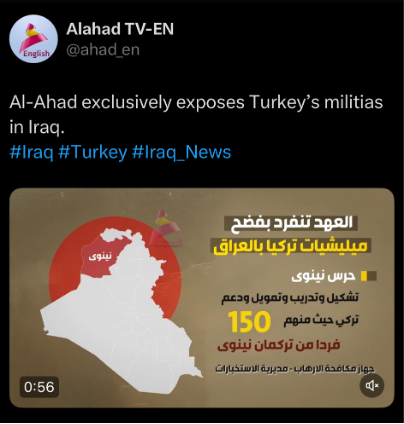
Figure 2: AAH-affiliated Media accuses PMF units in Nineveh of serving Turkish interests
The False Reformer: Framing the New Syrian Government as Illegitimate
Another prevalent theme is the illegitimacy of the new Syrian government, portrayed by Iraqi AOR media as a terrorist regime. These narratives often focus on Syrian Interim President and former Hay’at Tahrir al-Sham (HTS) leader Ahmed al-Sharaa, who previously fought for al-Qaeda in Iraq before founding its Syrian offshoot in 2011. Although Sharaa eventually severed ties with al-Qaeda to form HTS, he continued to wage insurgency against Assad alongside other Syrian opposition factions. After over a decade of fighting both the regime and his former jihadist allies, HTS seized control of Damascus in late January 2025.
Since coming to power, Sharaa has worked to distance himself from his jihadist roots by promoting a narrative of inclusive governance. He has ditched his traditional military garb for refined suits and watches during interviews and diplomatic visits to cultivate a persona palatable to Western audiences. Sharaa has also gone to great lengths to reinforce this narrative of transformation domestically, even dropping roses from helicopters previously used by Assad to drop barrel bombs on his opponents.
Yet many observers were initially skeptical of Sharaa’s perceived moderation. Facing a polished counter-narrative, AOR influence campaigns have leveraged this skepticism by referring to Sharaa by his jihadist pseudonym “al-Jolani” and equating HTS to ISIS. To reinforce this characterization, Iraqi AOR social media accounts spent much of February and March spotlighting claims of atrocities committed by the regime or its Turkish backers against Shia Awalites and other Syrian minorities. These posts were designed not only to incite domestic outrage in Iraq, but also to counter Western narratives celebrating Sharaa’s reforms. However, many of these reports were false, with some Christian communities even issuing notices not to believe certain claims. This social media activity foreshadowed the Assadist offensive that occurred in Syria in early March, which triggered an incredibly violent government crackdown that resulted in hundreds of civilian deaths, mostly Awalites. Iraqi AOR media has since continued to fuel this cycle of retaliatory violence amid ongoing sectarian clashes in Syria.
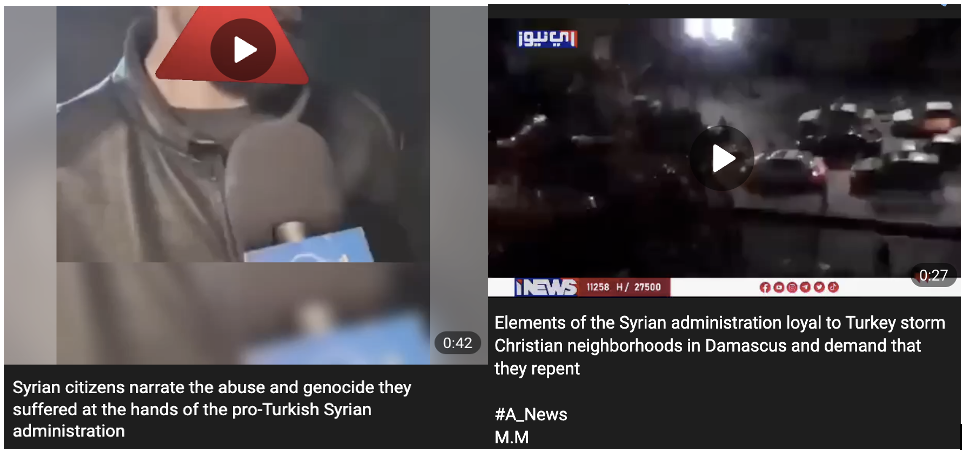
Figure 3: AOR-affiliated Telegram posts highlighting minority targeting in Syria
Beyond discrediting Syria’s new leadership, this influence campaign has exploited domestic fears over a resurgence of sectarian violence in Iraq. These domestic tensions came to a head in April when Sudani invited Sharaa to the May 17th Arab Summit in Baghdad. In addition to lambasting Sudani for extending the invite, AOR media leaked documents detailing Sharaa’s stint in Iraqi prison on terrorism charges between 2005 and 2011 to incite public opposition to his attendance. This campaign ultimately forced Sharaa to decline the invitation at the last minute for fear for his safety.
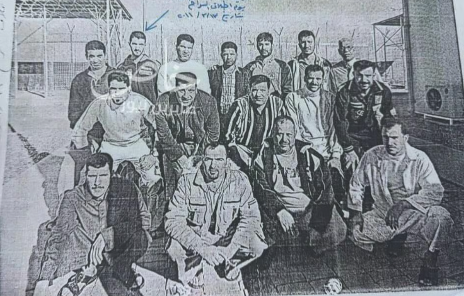
Figure 4: Leaked photo depicting Syrian President Ahmed al-Sharaa in Iraqi prison
The episode illustrated how repeated AOR messaging can be deployed to overwhelm competing narratives and rally public opinion behind a singular objective. But in other contexts, the AOR adopts a more calculated approach.
Taqiyya and Dual Messaging: Tehran’s Calculated Contradictions
A hallmark of AOR influence operations is their ability to send conflicting signals to different audiences at the same time. For example, Khazali gave a fiery sermon on the day of the Assadist offensive comparing the AOR’s struggle against Western powers to an approaching apocalyptic battle between good and evil. This rhetoric contrasted sharply with his statements in an interview with Iraqi state media only days earlier, in which he signaled openness to pragmatic engagement with the US.
Such contradictions are not accidental. Rather, they represent a fundamental pillar of Tehran’s post-Assad influence strategy. Washington Institute expert Hamdi Malik likens this sort of split signaling to the Islamic doctrine of taqiyya, which asserts that concealing one’s ideological beliefs and objectives is permissible when facing existential threats.
As the months progressed, this threat continued to inch closer to Iran’s doorstep. Still reeling from Assad’s ouster and the decimation of Hezbollah leadership during Israel’s 2024 invasion of Lebanon, Iran entered 2025 facing unprecedented sanctions and threats to its nuclear infrastructure from a new US administration. This “maximum pressure” approach was compounded by a sweeping air and naval campaign targeting the Houthi Movement, Tehran’s primary AOR foothold in the Gulf.
Fearing further escalation, Tehran and its proxies continued to deploy dual messaging tactics throughout the spring. After the campaign against the Houthis began in March, Iranian officials floated to Western media that Tehran planned to sever ties with the group despite simultaneously reaffirming solidarity in domestic outlets. This de-escalatory signaling aligned with reports that Tehran had warned AOR leaders against “provoking” the Americans and Israelis. However, this alleged message conflicted with rumors that Iraqi AOR militias had received new weapons shipments, relocated weapons caches, and hosted Houthi commanders for training exercises.
The Art of Posturing: AOR Media Responses to the Israel-Iran Conflict
Yet when Israel launched a series of unprecedented airstrikes on Iran’s nuclear infrastructure in June, taqiyya was no longer an option. The initial response of Iraqi AOR factions to the operation was fiery, uncompromising, and laced with threats of retaliation, but this rhetorical escalation was not mirrored on the ground. Although a handful of thwarted drone attacks on US targets in Iraq occurred after the conflict began on June 13th, no single group claimed responsibility. This lack of attribution contrasted starkly with a series of explicit threats from AOR leaders warning against US involvement in the conflict.
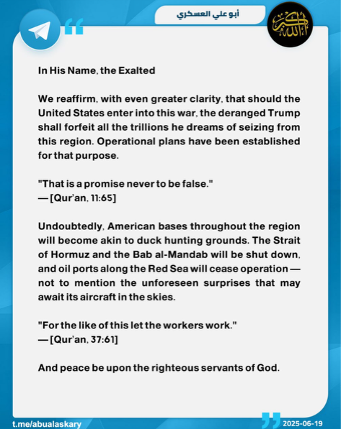
Figure 5: KH Telegram post threatening US forces
When the US did intervene on June 21st, Iraqi AOR militias ultimately failed to follow through on these threats. Two factors explain this restraint. First, inviting US retaliation would incite public backlash and dim the electoral prospects of AOR factions already navigating their own internal divisions. Second, Iran’s regional proxy network is overstretched. With the rest of the AOR weakened, Tehran has a vested interest in keeping its remaining proxies intact by keeping them out of a war they can’t win. It also recognized that any claimed AOR attacks on US targets in Iraq could be interpreted as a breach of the ceasefire it is eager to uphold. For their part, Iraqi AOR leaders may be wary of inviting retaliation when Iran and its other proxies are in no shape to offer meaningful support.
Despite signaling weakness, the disconnect between the AOR’s rhetorical and military response to the conflict offers an underrated strategic benefit. In the same manner as taqiyya, this gap serves to confuse adversaries about which threats are credible and which are not. The conflict also offered the AOR an opportunity to scapegoat its domestic opponents. For example, AOR media leveraged the conflict to exert pressure on the KRG amid the intensifying debate over Kurdish oil autonomy by accusing it of hosting Israeli intelligence operations. This narrative was used to justify a series of missile strikes targeting Kurdish energy infrastructure in mid-July, temporarily shutting down major production sites and cutting KRG oil output by 50%. These strikes served a purpose far more valuable to Tehran than symbolic retaliation: preserving the AOR-run Iraq-Iran oil smuggling network and preventing its rivals from enjoying the benefits of Kurdish oil autonomy.
The AOR also leveraged the conflict to politically pressure Sudani and further the AOR’s hardline national security agenda. Consistent with past patterns, the most prominent theme of AOR narratives surrounding the conflict was the theme of Iraqi sovereignty. AOR media fixated on Israeli violations of Iraqi airspace over the course of the offensive, framing them as both a national humiliation and justification for renewed opposition to US military presence in Iraq. For example, AAH-affiliated media again invoked concerns over Israeli intelligence infiltration and called for “reassess[ing] the security leadership in the Iraqi state.”
Meanwhile, a recently reactivated KH Telegram accused Sudani of failing to uphold a prior agreement to expel US forces, which formed the basis for the informal ceasefire brokered after the Iraqi AOR’s initial wave of attacks on Israeli and US targets in response to the Gaza conflict. The account wrote: “The agreement between the [AOR] and the Prime Minister regarding the withdrawal of American enemies from Iraq has only two months left. So far, we have not observed any change in the presence of these occupying forces…We have given him more than enough time, and he must adhere to the deal. Otherwise, we will have another stance.”
Maintaining Influence Under Pressure: The Future of the PMF
In the end, every thread of this influence campaign ties into Tehran’s core objective of preserving AOR influence over Iraq’s security apparatus by casting the PMF as the sole guarantor of Iraqi sovereignty. The PMF remains Tehran’s most entrenched lever of influence in Iraq, making control over its leadership and structure a top priority for the AOR. Efforts to shape the PMF’s future have thus become a growing source of tension in the broader struggle between the AOR and their domestic political opponents ahead of elections. These tensions were first sparked by January reports that US officials had urged Prime Minister Sudani to force AOR militias to disarm by dismantling the PMF. The demands echoed the longstanding position of the AOR’s most influential domestic opponent, nationalist Shia cleric Muqtada al-Sadr.
AOR media initially framed this pressure to disarm as a foreign plot to destabilize Iraq, while CF hardliners scrambled to oust existing PMF leadership and replace them with AOR loyalists. However, Sudani blocked these efforts to protect his political allies, leading the AOR to pivot toward attempting to quietly shape PMF reform in its favor. Instead of resisting calls for reform, CF hardliners began pushing for new legislation to formally integrate the PMF under the umbrella of Iraq’s national security forces. On its surface, the effort suggested a willingness to work within state institutions. But in reality, the proposed bill would effectively enable the AOR to operate even more freely under the cover of state legitimacy.
AOR media again employed taqiyya to distract from these reform efforts, with some AOR representatives reportedly telling Western media they were willing to disarm while simultaneously denying the claim to Arabic outlets. Yet once the Israel-Iran conflict raised the stakes for PMF integration by exposing AOR weaknesses, AOR media pivoted to more overt pressure. In an unusually direct attack, the same KH-linked Telegram account issued a scathing statement against Sadr’s continued demands to dissolve (rather than reform) the PMF, linking him to grievances over Turkey, the KRG, and the US. This message was designed to reinforce the idea that only the PMF–which drove out ISIS in 2017–can guarantee Iraq’s security in the face of these threats.
Sudani ultimately postponed voting on the bill in July following harsh backlash from Sunni and Kurdish parliamentarians and threats of punitive measures from Washington. Angered, AOR media responded by accusing Sudani of capitulating to external pressures. Sudani, for his part, denied that the postponement was politically motivated and leveraged his power over state media to reaffirm his support for the bill.
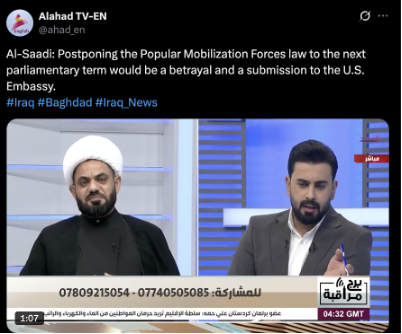
Figure 6: AAH-affiliated media amplifies statements from KH political leader
Tensions boiled over days later when KH fighters stormed the Ministry of Agriculture to protest the firing of its KH-affiliated director and prevent the installation of his replacement. The violence resulted in the deaths of one civilian and one police officer, contradicting recent claims from Sudani’s office that he had reassured US Secretary of State Marco Rubio of his authority over the PMF.
Interestingly, AOR media joined Sudani in publicly denouncing the violence, although none referenced KH directly. Such performative displays represent another example of dual messaging. By staging public condemnations while simultaneously instigating instability, the AOR is attempting to frame integration as a necessary step to rein in the very instability it is actively fueling. This maneuver places both Baghdad and Washington in a coercive bind: either allow the AOR to entrench itself further through PMF integration, or risk continued acts of defiance should the bill fail to pass.
Looking Ahead
Together, these narratives offer critical insights into Tehran’s plans to salvage its regional influence. They suggest Tehran is shifting its focus to safeguarding its influence in Iraq for the foreseeable future while it recalibrates its broader regional strategy. In the lead-up to Iraq’s November elections, AOR media will likely continue to employ a combination of aggressive rhetoric, strategic contradictions, and targeted low-level violence to maintain AOR leverage. Yet the disconnect between the AOR’s rhetorical and ground escalations suggests a deliberate effort to manage risk and avoid direct confrontations that could undermine their political standing. This tactical restraint signals just how overstretched the AOR has become, with Tehran’s remaining proxies in Iraq too valuable as economic lifelines and political veto players to be sacrificed in symbolic clashes.
However, it is crucial not to take these narratives at face value. A key feature of Tehran’s influence campaigns is their use of dual messaging. These deliberate contradictions aim to maintain strategic ambiguity by offering AOR factions the flexibility to adjust while keeping opponents uncertain about their true intentions. Such tactics create space for plausible deniability and manipulate external perceptions of their military and political capabilities. This serves as an important reminder that adversarial narratives can reveal not only what our opponents want us to believe, but also what they want to obscure.
Image: Iranian President Masoud Pezeshkian and Iraqi Prime Minister Mohammed Shia al-Sudani attend a welcoming ceremony in Tehran, Iran, January 8, 2025. (Reuters)


